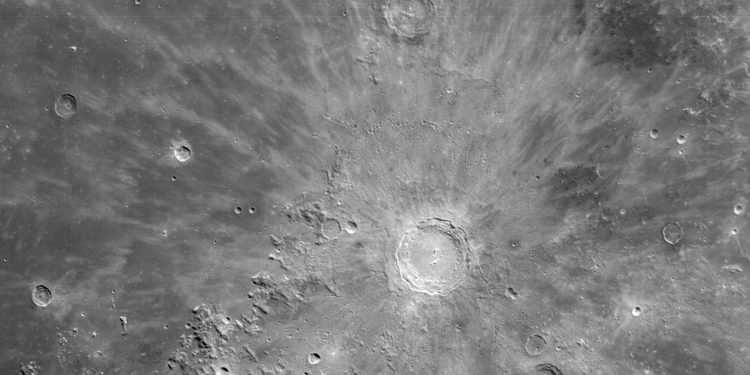Recent data analysis from NASA’s Lunar Reconnaissance Orbiter (LRO) has revealed that deposits of ice in the Moon’s surface are far more extensive than previously thought. This discovery could significantly impact future lunar missions, offering a potential resource to support human exploration. Water on the Moon can serve multiple purposes, from providing radiation protection to being split into hydrogen and oxygen for rocket fuel, breathable air, and energy production.
Previous studies have focused on permanently shadowed regions (PSRs) near the Moon’s South Pole, particularly within craters such as Cabeus, Haworth, Shoemaker, and Faustini. These dark, cold regions are prime candidates for holding ice. However, this latest analysis has expanded our understanding, revealing evidence of ice in PSRs beyond just the South Pole. Dr. Timothy P. McClanahan, a lead researcher from NASA’s Goddard Space Flight Center, explains, “Our findings show evidence of water ice in PSRs up to 77 degrees south latitude, broadening the scope of where ice may be found on the Moon.”
Ice Distribution and Characteristics
The study provides vital information for future lunar missions, mapping out areas where ice is more or less likely to be found. McClanahan notes that the highest concentrations of ice are expected in the coldest areas, where temperatures drop below 75 Kelvin (-198°C). These regions tend to be at the base of poleward-facing slopes within the PSRs. While the exact volume of ice remains uncertain, McClanahan estimates that for each square meter of surface area over these ice-rich deposits, there could be at least five liters of ice within the top meter of the regolith, the Moon’s dust and rock layer.
Lunar ice is thought to be implanted in the regolith through a variety of processes. Comet and meteor impacts may deposit ice, while some ice could be formed through chemical reactions between hydrogen from the solar wind and oxygen in the regolith. Additionally, water vapor from the Moon’s interior may have played a role in ice formation. These ice deposits are located in PSRs, which exist in deep craters where the Sun’s rays have not reached for billions of years. The extreme cold in these areas allows ice to accumulate and remain preserved over vast timescales.
McClanahan’s study suggests that ice in these shadowed regions may have been trapped for billions of years. Once ice molecules land in a PSR, they become locked in by the cold temperatures, preventing them from evaporating or sublimating. However, ice that ends up in areas exposed to sunlight likely does not survive long enough to accumulate.
Detecting Lunar Ice with Advanced Technology
The research team used LRO’s Lunar Exploration Neutron Detector (LEND) to detect signs of these ice deposits. By measuring neutrons that are scattered when galactic cosmic rays strike the lunar surface, LEND’s instruments were able to identify areas with higher concentrations of hydrogen. Since hydrogen is a key component of water, its presence suggests the existence of ice.
The team employed the Collimated Sensor for Epithermal Neutrons (CSETN) to analyze PSRs. The sensor, with its 18.6-mile field of view, measured neutron emissions from over 500 PSRs of varying sizes. The results indicated a strong correlation between the size of the PSR and the concentration of hydrogen, suggesting that larger PSRs may contain more ice.
Implications for Future Lunar Exploration
This discovery of widespread ice deposits beyond the South Pole opens up new possibilities for lunar exploration. Ice could become a crucial resource for sustaining human presence on the Moon, enabling the production of essential materials like water, fuel, and oxygen. Additionally, understanding the distribution of ice will help mission planners identify the most promising locations for future landings and mining operations.
As space agencies and private companies plan future missions to the Moon, the presence of lunar ice could change the course of exploration. Access to water and other resources on the Moon could make deep-space exploration more feasible and reduce the costs of transporting supplies from Earth. The findings from this study not only shed light on the Moon’s frozen history but also bring us one step closer to a sustainable human presence beyond Earth.











